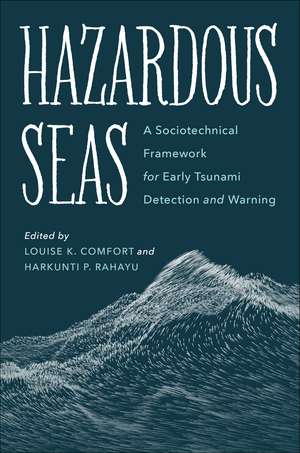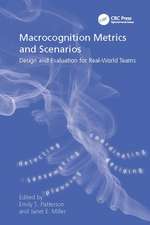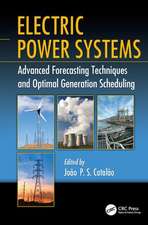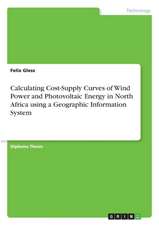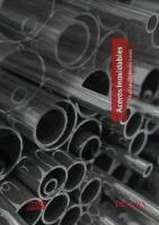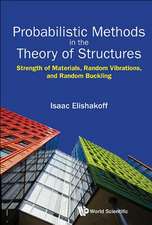Hazardous Seas: A Sociotechnical Framework for Early Tsunami Detection and Warning
Editat de Louise K. Comfort, Harkunti P. Rahayu Cuvânt înainte de Dr. Dwikorita Karnawati, Dr. Ir. Hammam Rizaen Limba Engleză Paperback – 19 iul 2023
Tsunamis are infrequent but terrifying hazards for coastal communities. Difficult to predict, they materialize with little warning, claiming thousands of lives and causing billions of dollars in damage. Recent mega-tsunamis in Japan and Indonesia claimed close to 250,000 lives, triggering wide-scale economic and social disruption. Developing countries cannot afford costly underwater cable systems, and governments and relief organizations have been forced to rely on flawed warning systems such as deep-sea buoys. Now, a groundbreaking new approach to tsunami detection and warning, which relies on low-cost underwater sensors and networks of smartphone communication, has changed the equation. Developed by an international, interdisciplinary team of researchers, this approach allows at-risk coastal communities to have an economically viable, scientifically sound means to protect themselves.
Coeditors Louise K. Comfort and Harkunti P. Rahayu, accomplished experts in disaster preparedness, contend that it will give communities precious additional minutes to communicate warnings about imminent tsunamis to residents, potentially saving many lives. Chapters authored by a close group of collaborators present the science behind this new approach, describing conceptual design, computational models, and real-time testing of a prototype system in the warm equatorial waters of Indonesia’s Mentawai Sea. Introductory chapters explain the sociotechnical approach—how undersea sensors can transmit data to a network of electronic devices on land to alert residents to impending tsunami threats in near-real time. Subsequent chapters explore what this might look like: assessing communities at risk; designing interactive information systems for communication during an emergency; designing wireless networks for smartphone communication that can guide residents to safety; and designing community-based shelters. The book concludes with a thoughtful analysis of how these sociotechnical advances might be used for all coastal cities at risk of tsunamis, sea-level rise, storm surges, and other hazards.
Hazardous Seas is an invaluable guide for policy makers and international NGOs looking to save lives from tsunamis and mitigate crippling damage to communities, and provides a comprehensive overview of tsunami detection and warning for students of engineering, computer science, planning, policy, and economic and environmental analysis.
Coeditors Louise K. Comfort and Harkunti P. Rahayu, accomplished experts in disaster preparedness, contend that it will give communities precious additional minutes to communicate warnings about imminent tsunamis to residents, potentially saving many lives. Chapters authored by a close group of collaborators present the science behind this new approach, describing conceptual design, computational models, and real-time testing of a prototype system in the warm equatorial waters of Indonesia’s Mentawai Sea. Introductory chapters explain the sociotechnical approach—how undersea sensors can transmit data to a network of electronic devices on land to alert residents to impending tsunami threats in near-real time. Subsequent chapters explore what this might look like: assessing communities at risk; designing interactive information systems for communication during an emergency; designing wireless networks for smartphone communication that can guide residents to safety; and designing community-based shelters. The book concludes with a thoughtful analysis of how these sociotechnical advances might be used for all coastal cities at risk of tsunamis, sea-level rise, storm surges, and other hazards.
Hazardous Seas is an invaluable guide for policy makers and international NGOs looking to save lives from tsunamis and mitigate crippling damage to communities, and provides a comprehensive overview of tsunami detection and warning for students of engineering, computer science, planning, policy, and economic and environmental analysis.
Preț: 348.61 lei
Nou
Puncte Express: 523
Preț estimativ în valută:
66.71€ • 72.44$ • 56.04£
66.71€ • 72.44$ • 56.04£
Carte disponibilă
Livrare economică 02-16 aprilie
Preluare comenzi: 021 569.72.76
Specificații
ISBN-13: 9781642831634
ISBN-10: 1642831638
Pagini: 360
Ilustrații: 89 figures
Dimensiuni: 152 x 229 x 20 mm
Greutate: 0.66 kg
Editura: Island Press
Colecția Island Press
ISBN-10: 1642831638
Pagini: 360
Ilustrații: 89 figures
Dimensiuni: 152 x 229 x 20 mm
Greutate: 0.66 kg
Editura: Island Press
Colecția Island Press
Notă biografică
Louise K. Comfort is professor and former director of the Center for Disaster Management, Graduate School of Public and International Affairs, University of Pittsburgh. She is principal investigator of a National Science Foundation project to deploy and test an early tsunami detection and warning system. She is a Fellow of the National Academy of Public Administration.
Harkunti P. Rahayu is a professor in the Urban and Regional Planning Department, School of Architecture, Planning, and Policy and Development at the Institute of Technology of Bandung. She serves as chair of the UNESCO Indian Ocean Tsunami Warning and Mitigation System Working Group on Tsunami Risk, Community Awareness and Preparedness.
Harkunti P. Rahayu is a professor in the Urban and Regional Planning Department, School of Architecture, Planning, and Policy and Development at the Institute of Technology of Bandung. She serves as chair of the UNESCO Indian Ocean Tsunami Warning and Mitigation System Working Group on Tsunami Risk, Community Awareness and Preparedness.
Cuprins
A Scientific Note
Foreword by Hammam Riza
Preface
Chapter 1. Building Community Resilience to Disaster Risk: A Sociotechnical Approach
Louise K. Comfort and Mark W. Dunn
Chapter 2. Community Networks for Tsunami Early Warning
Harkunti P. Rahayu and Louise K. Comfort
Chapter 3. A Reliable, Timely Communication Application to Enhance Tsunami Preparedness
Fuli Ai, X. Xerandy, Taieb Znati, Louise K. Comfort, and Febrin Anas Ismail
Chapter 4. Device-to-Device Communication: A Scalable, Socially Aware, Land-Based Infrastructure to Support Community Resilience in Disaster Events
X. Xerandy, Fuli Ai, Taieb Znati, Louise K. Comfort, and Febrin Anas Ismail
Chapter 5. Community-Based Shelters: Design, Construction, and Implementation
Febrin Anas Ismail and Abdul Hakam
Chapter 6. Enabling Adaptive Collective Action for Communities at Risk: Responding to Tsunami Risk in Padang City, Indonesia
Yoon Ah Shin, Louise K. Comfort, Fuli Ai, and Febrin Anas Ismail
Chapter 7. Wireless Networks for Disaster-Degraded Contexts: Tsunami Evacuation in Padang, Indonesia
Fuli Ai, X. Xerandy, Echhit Joshi, Taieb Znati, and Febrin Anas Ismail
Chapter 8. Real-Time Seafloor Tsunami Detection and Acoustic Communications
Lee Freitag, Keenan Ball, Peter Koski, James Partan, Sandipa Singh, Dennis Giaya, and Kayleah Griffen
Chapter 9. A Prototype Ocean Bottom Pressure Sensor Deployed in the Mentawai Channel, Central Sumatra, Indonesia: Preliminary Results
Emile A. Okal and Lee Freitag
Chapter 10. Underwater Sensor Network Prototype for Tsunami Detection and Warning: A Long Deployment Journey toward Functionality
X. Xerandy, Iyan Turyana, Lee Freitag, Wahyu Pandoe, Harkunti P. Rahayu, and Febrin Anas Ismail
Chapter 11. Indian Ocean Tsunami Warning and Mitigation System: Initiation, Evolution, and Implementation
Harkunti P. Rahayu
Chapter 12. Creating a Sustainable Learning System in Regions of Risk
Louise K. Comfort, Wahyu W. Pandoe, Harkunti P. Rahayu, and Iyan Turyana
Afterword
Acknowledgments
About the Editors
Contributors
Index
Descriere
Tsunamis are infrequent but terrifying hazards for coastal communities. Difficult to predict, they materialize with little warning, claiming thousands of lives and causing billions of dollars in damage. Now a groundbreaking new approach to tsunami detection and warning developed by an international team of researchers that relies on low-cost underwater sensors and networks of smartphone communication gives at-risk coastal communities an economically viable, scientifically sound means to protect themselves.
Hazardous Seas, edited by disaster preparedness experts Louise K. Comfort and Harkunti P. Rahayu, is an invaluable guide for policy makers and international NGOs looking to save lives from tsunamis and mitigate crippling damage to communities. It also provides a comprehensive overview of tsunami detection and warning for students of engineering, computer science, planning, policy, and economic and environmental analysis.
Hazardous Seas, edited by disaster preparedness experts Louise K. Comfort and Harkunti P. Rahayu, is an invaluable guide for policy makers and international NGOs looking to save lives from tsunamis and mitigate crippling damage to communities. It also provides a comprehensive overview of tsunami detection and warning for students of engineering, computer science, planning, policy, and economic and environmental analysis.
